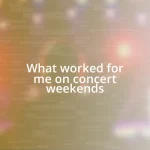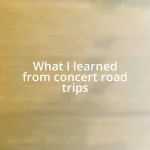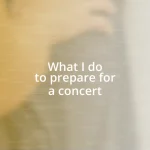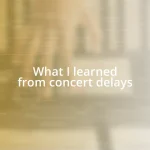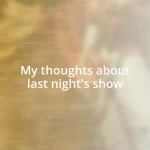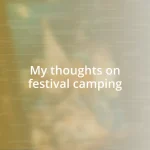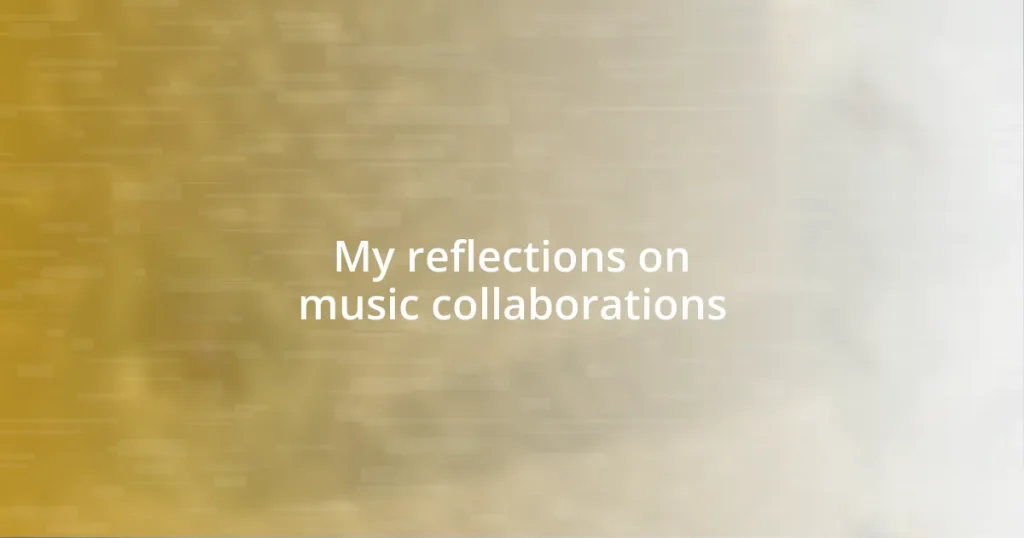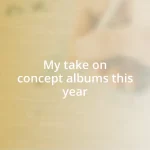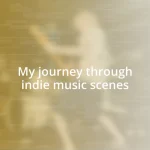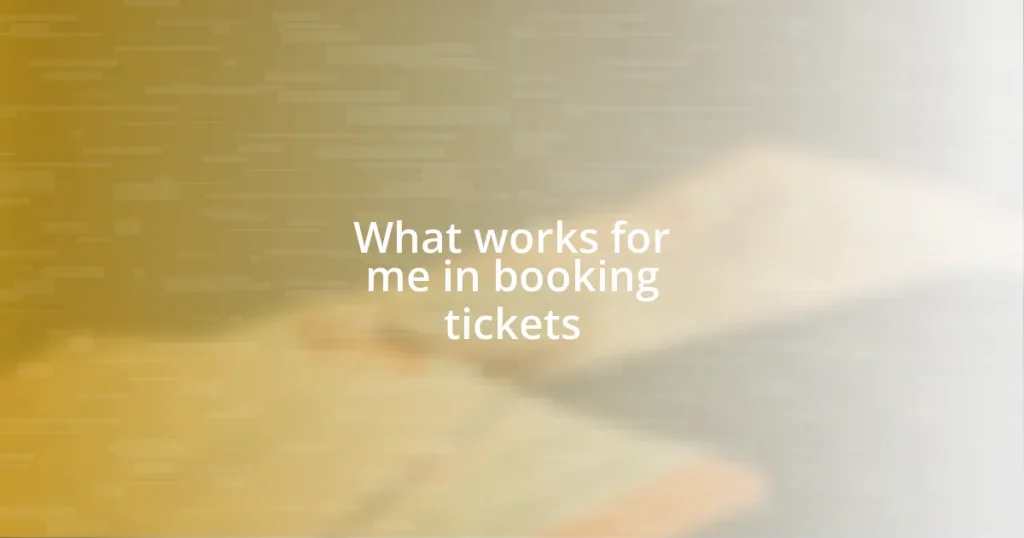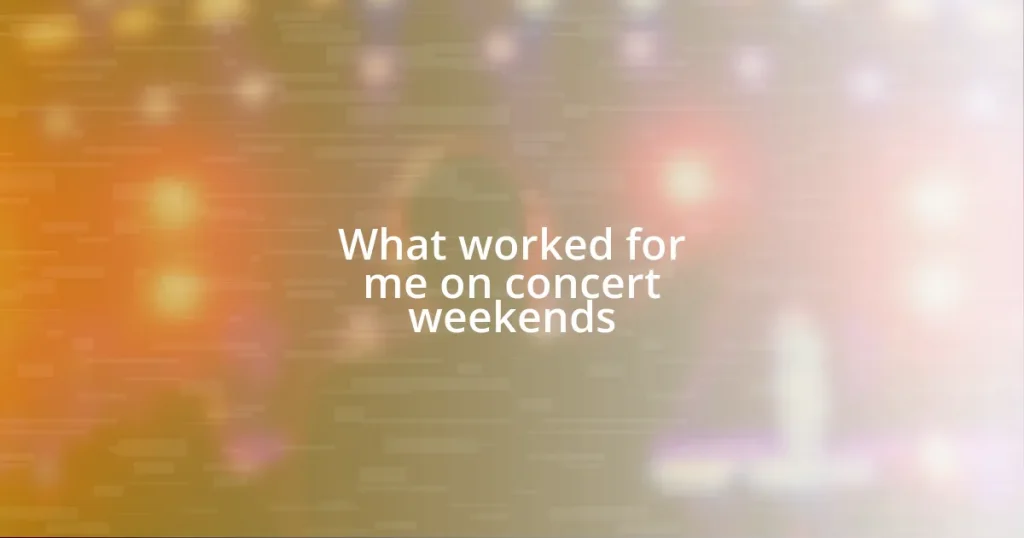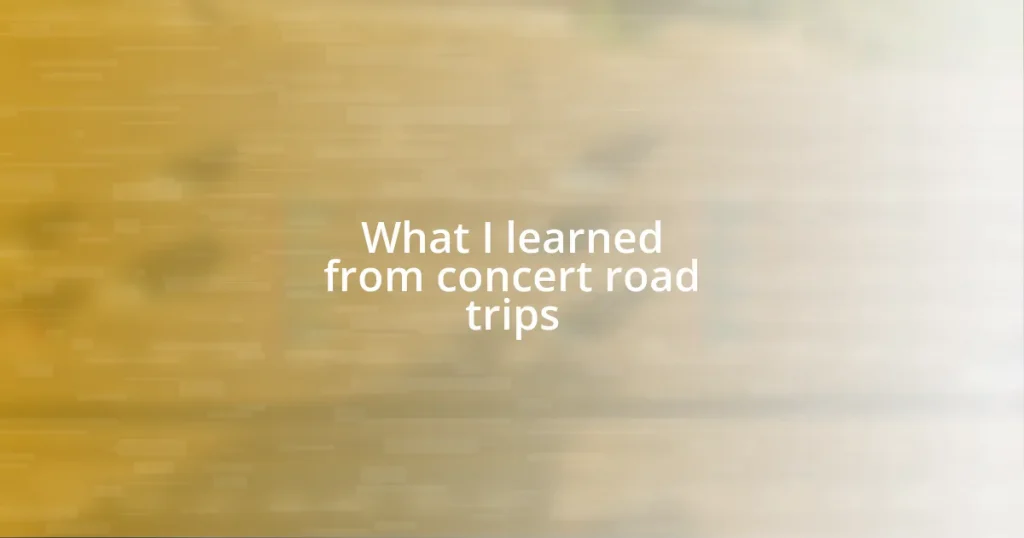Key takeaways:
- Collaboration enhances creativity by merging different musical styles, leading to innovative results and personal growth.
- Effective communication and clearly defined roles are crucial for successful music partnerships, fostering accountability and synergy.
- Utilizing the right technology and tools, such as cloud platforms and digital audio workstations, boosts collaboration efficiency and creativity.
- Successful collaborations often highlight the power of diverse influences, as seen in notable partnerships like Elton John and Bernie Taupin, and Rihanna and Calvin Harris.
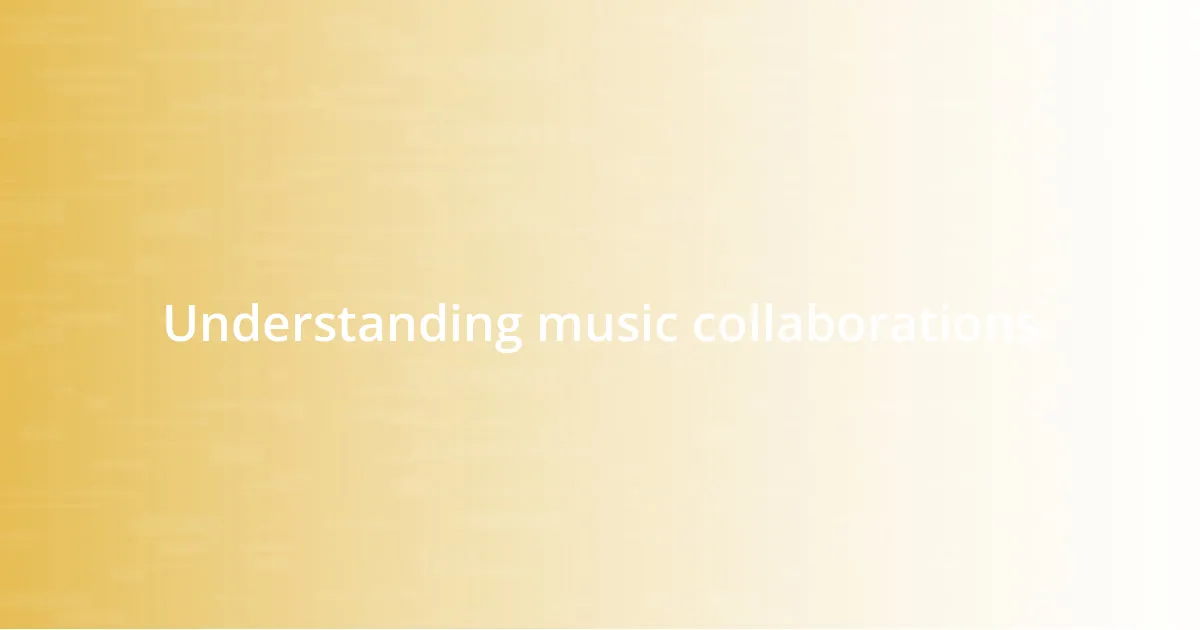
Understanding music collaborations
Music collaborations are fascinating because they create a fusion of different styles, ideas, and personalities. I remember the first time I collaborated with another artist; it felt like we were weaving our individual stories into a single tapestry. Isn’t it incredible how two different voices can resonate in ways we never expected?
Sometimes, collaborations don’t click right away, and that’s perfectly normal. I’ve experienced this firsthand—initially, we struggled to find common ground in our musical visions. But once we embraced our differences and allowed our creativity to flow, the magic happened. Have you ever had that experience where teamwork transformed your approach to a project?
There’s a certain vulnerability that comes with sharing your artistic process with others. When I sit down to create with someone else, I find myself not just sharing my music, but also my passions and insecurities. It’s daunting, but also liberating—like opening a door to a new world of possibilities. Isn’t that what makes music so powerful?
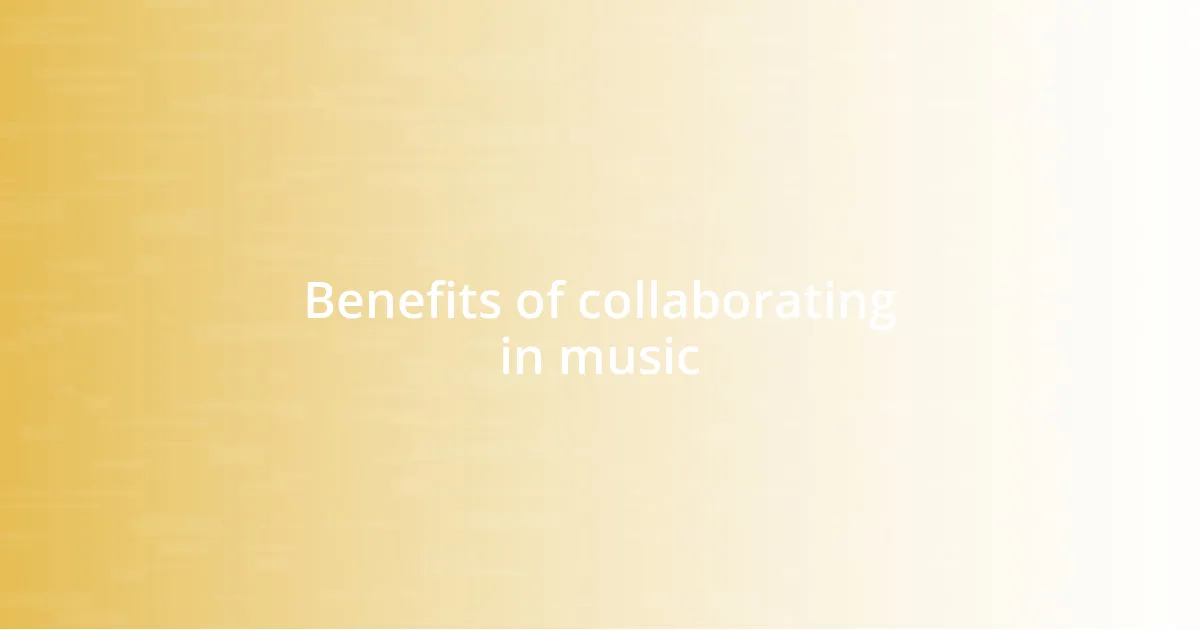
Benefits of collaborating in music
Collaborating in music opens up a treasure trove of creative possibilities. I’ve often found that when I work with others, I’m exposed to genres and techniques I might never explore alone. For instance, during a recent collaboration, I was introduced to jazz improvisation, which transformed my approach to melody and rhythm. Have you ever tried blending your style with someone else’s? That exchange can push you beyond your limits, revealing skills you didn’t know you had.
Another benefit worth highlighting is the network expansion that comes with collaboration. Each artist has their own connections and fanbase, which can lead to exciting opportunities. I remember collaborating with a singer-songwriter whose following was entirely different from mine. Our project not only brought us creative fulfillment but also opened doors to a whole new audience. Isn’t it exhilarating to step into a larger world where fresh listeners discover your work?
Finally, collaborations often lead to educational experiences. Every musician you partner with brings their unique perspective and expertise. I’ve learned so much just by bouncing ideas off fellow artists, and often, those moments have resulted in unforgettable songs. Learning from others not only enriches your own skills but can also deepen your understanding of music. In short, it’s like taking masterclasses every time you collaborate—an invaluable part of artistic growth.
| Benefit | Description |
|---|---|
| Creativity Boost | Combining different styles can lead to innovative music that neither artist could achieve alone. |
| Network Expansion | Collaborations introduce artists to new fanbases and opportunities through each other’s networks. |
| Educational Value | Working with others offers invaluable lessons that enhance musical skills and knowledge. |
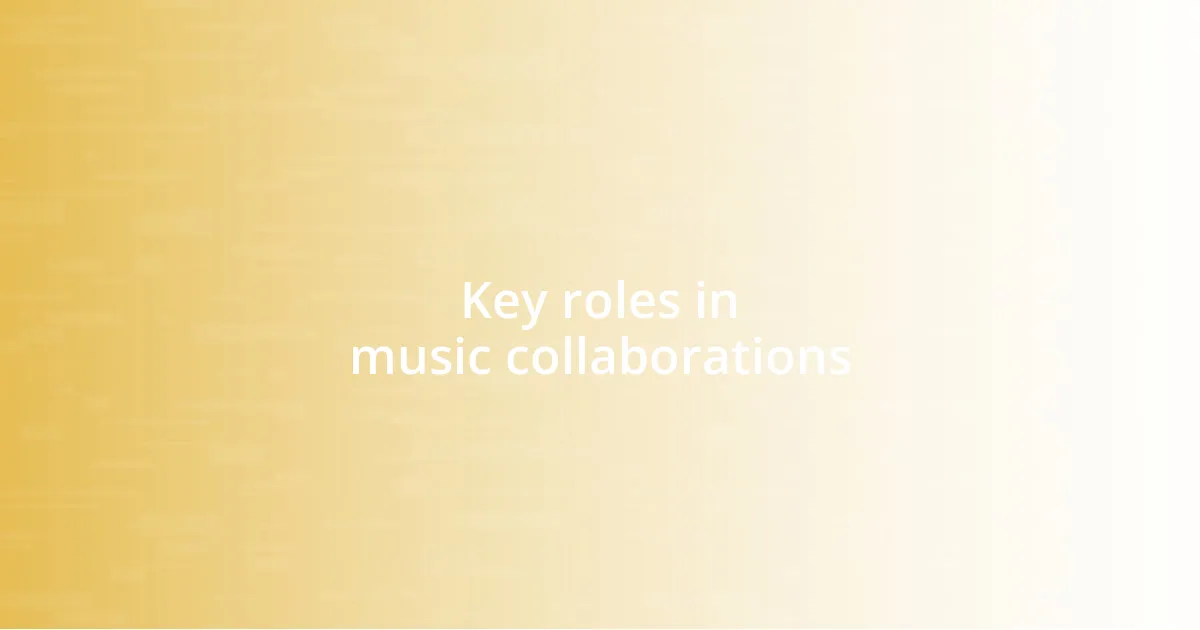
Key roles in music collaborations
When I think about the key roles in music collaborations, I envision a diverse team where each member contributes a unique piece to the puzzle. From my experience, having a clear understanding of each person’s strengths can make a huge difference. For instance, there’s often a lead artist who drives the vision, while another might excel in technical aspects, like arrangement and production. This balance can elevate the project’s overall quality, ensuring everyone’s talents shine through.
- Lead Artist: Sets the overarching vision and direction for the music.
- Lyricist: Specializes in crafting meaningful and impactful lyrics, capturing emotions and stories.
- Producer: Manages the technical side, working on sounds, mixing, and the overall soundscape.
- Musician/Performer: Brings their unique instrumental skills or vocal style to enhance the project.
- Collaborative Writer: Contributes ideas and concepts, ensuring the song resonates on multiple levels.
Reflecting on a collaboration I did a while back, I was the lead artist, but I realized how vital my co-writer was in shaping the lyrics. Their deep understanding of storytelling sparked a whole new dimension in our song. It was empowering to see how the synergy between our roles ignited creativity in ways I couldn’t have done alone. I believe that recognizing and respecting each person’s role fosters a collaborative environment where everyone feels valued and inspired. Isn’t that what collaboration is all about?
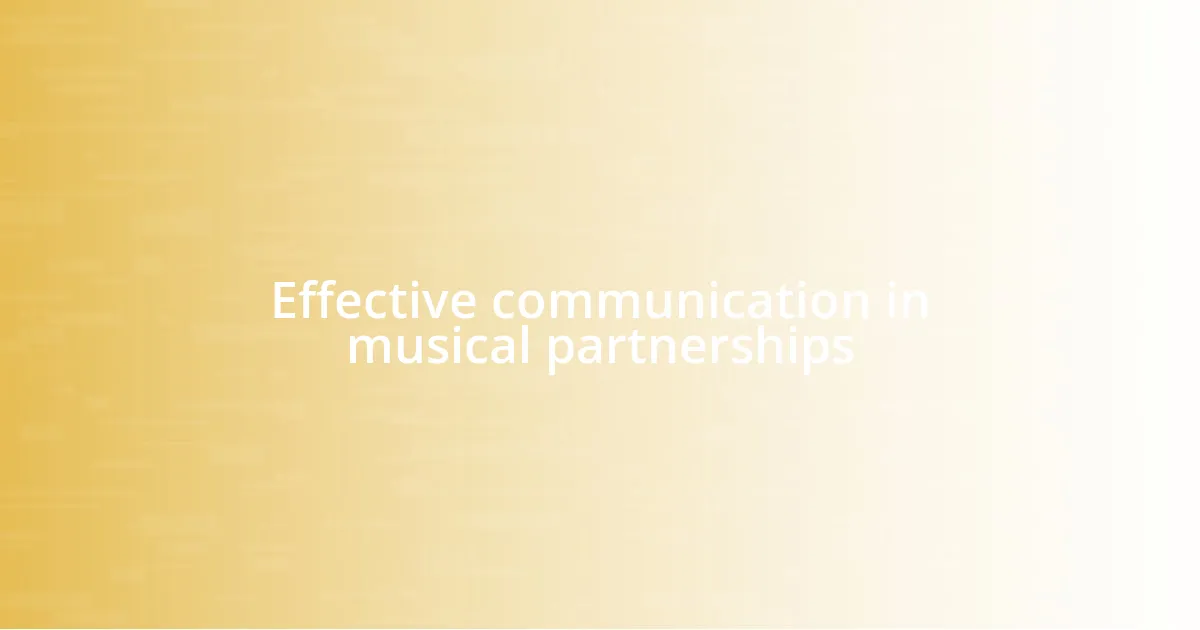
Effective communication in musical partnerships
Effective communication is the backbone of any successful musical partnership. I remember once collaborating with a fellow musician who had a completely different approach to songwriting. At first, it felt like we were speaking different languages. However, once we established a routine of sharing our ideas openly and often, our synergy blossomed. Do you think that this kind of transparent dialogue can transform how you compose music with others?
Listening is just as crucial as sharing. In another collaboration, I found myself caught up in my own style and ideas. My partner encouraged me to step back and truly hear her perspective. That moment taught me that bringing together diverse viewpoints sparks creativity and innovation. Have you ever experienced that moment when listening leads to a breakthrough in your creative work?
It’s essential to set clear expectations and establish boundaries early in the collaboration process. During a recent project, we made sure to discuss our individual contributions and timelines right from the start. This proactive approach not only minimized misunderstandings but fostered an environment of accountability. Isn’t it interesting how clarity can pave the way for creativity, allowing the music to flow more naturally?
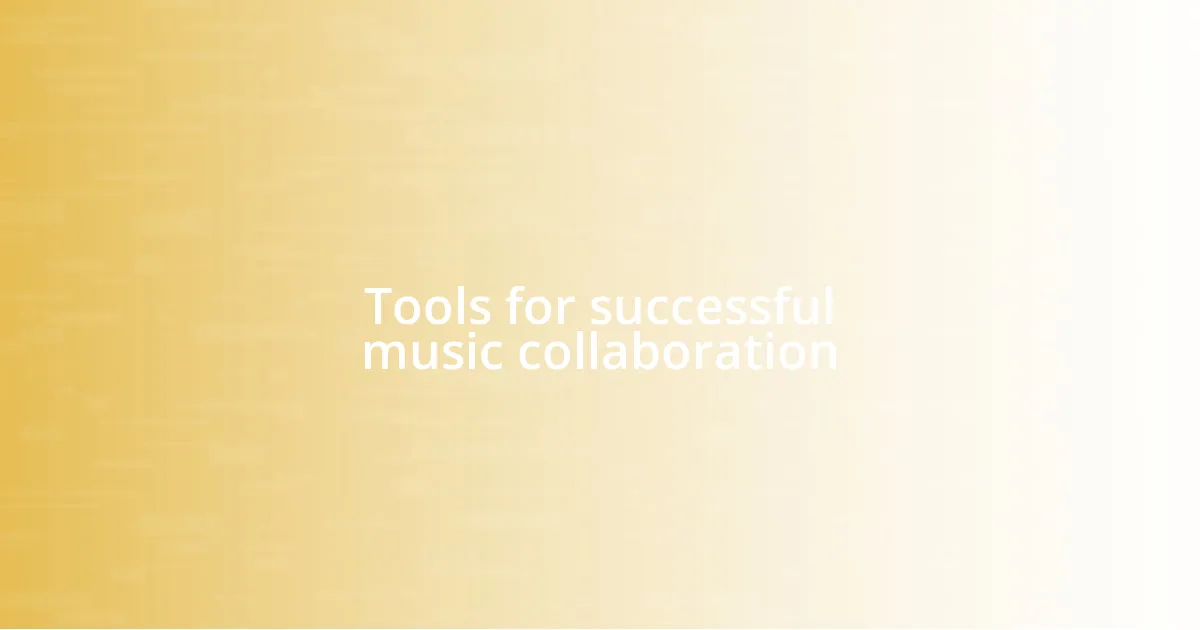
Tools for successful music collaboration
One of the most essential tools for successful music collaboration is the right technology. I’ve found that using cloud-based platforms like Google Drive or Dropbox allows everyone involved to access working files anytime, anywhere. This kind of flexibility has been a game-changer for my projects, especially when coordinating with artists across different time zones. Have you ever been in a situation where a simple file-sharing process made a world of difference?
Another critical tool is digital audio workstations (DAWs). I remember when I switched from a basic program to a more advanced DAW for my collaborations. The enhanced features enabled us to experiment with sounds and arrangements more effectively. It’s incredible how the right software can inspire new ideas. Do you think having access to robust tools might unlock creativity in unexpected ways?
Lastly, effective project management software, like Trello or Asana, can elevate the collaboration process. I recently used Trello in a group project, and visualizing our tasks was immensely helpful. It kept everyone aligned on our goals and deadlines, fostering a sense of shared ownership. How do you manage the workflow in your collaborations? Having a solid structure can truly help creativity to flourish without chaos.
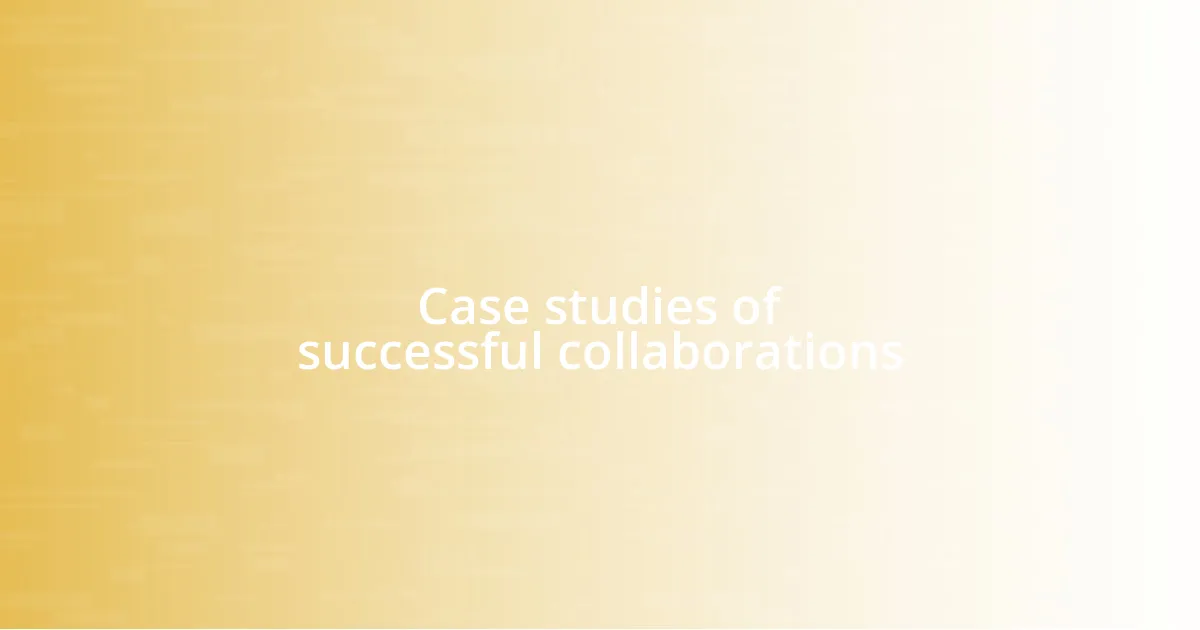
Case studies of successful collaborations
One memorable case study that comes to mind is the collaboration between Elton John and Bernie Taupin. Their partnership has flourished for decades, primarily because they developed a seamless method of communication. I recall reading about their process, where Taupin would write lyrics while John composed the music separately, and then they would come together to create something magical. Isn’t it fascinating how their distinct workflows led to timeless hits, highlighting that even different styles can harmonize beautifully?
Another excellent example is the blend of styles between Rihanna and Calvin Harris. Their collaborations, like “We Found Love,” underscore how contrasting influences can produce chart-topping results. When I first listened to this track, I felt an immediate rush of energy, something that wasn’t there in their individual works. It made me realize that sometimes, the clash of genres and backgrounds generates sparks that can elevate the music to another level. Have you ever gotten lost in a song that felt like a perfect storm of sounds?
Finally, consider the unique partnership of Luke Bryan and Blake Shelton in the country music realm. Their chemistry and playful rivalry are palpable in their joint performances. I remember watching one of their live shows, where their camaraderie was infectious, drawing in the audience completely. It’s a beautiful reminder that a shared dynamic not only enhances the music but also captivates listeners in a way that stands out. How often do we recognize the power of personality in a collaboration to create a truly unforgettable experience?

